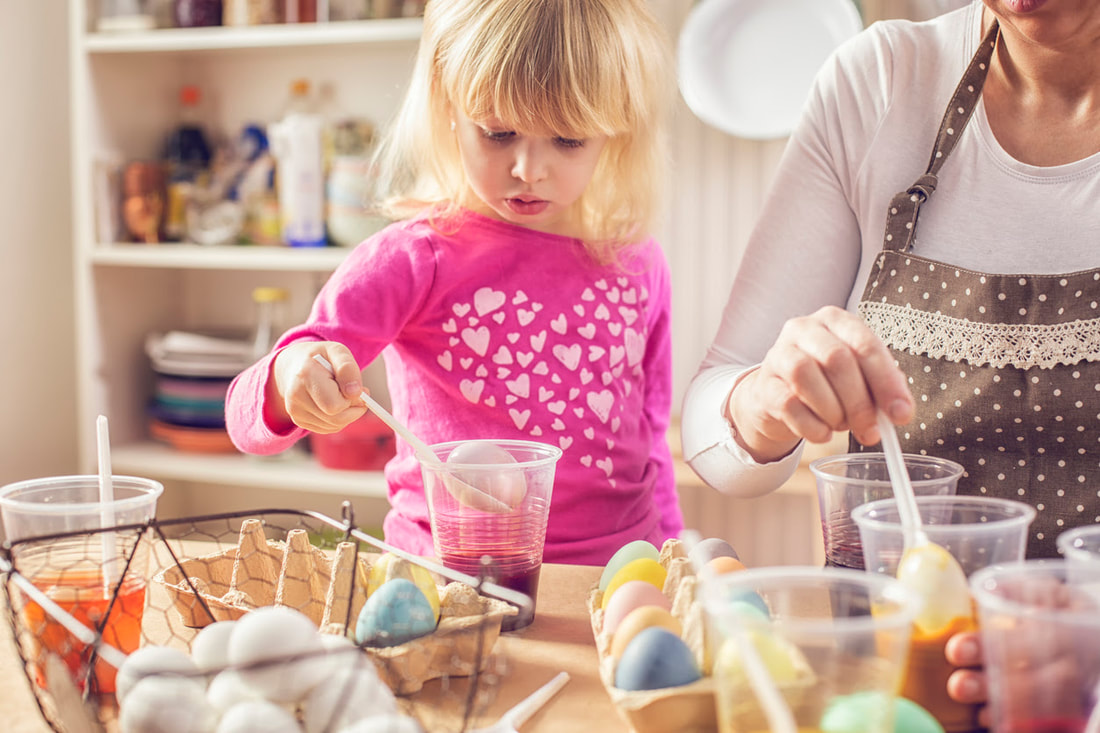|
Easter is fast approaching, and with the excitement of the holiday comes the fun, kid-approved activity of coloring Easter eggs. Some may choose to have a flock of chickens that allow you to already have a variety of colored eggs (see my last post)-but what if you don't? There are several ways to color eggs, and there are even some great natural and safe ways to dye eggs. So before you begin grabbing your eggs and giving color a whirl, make sure you have taken note of what you might need.
Preparing Your Eggs For Color Before you start coloring your eggs, the first thing you have to do is hard boil then. According to the University of Minnesota, the best way to safely boil eggs is to use a saucepan with cold water at least one inch above a single layer of eggs. Then, after the water reaches a boil, you will want to leave the eggs in the pan for eighteen minutes if you have extra large eggs, fifteen for large eggs, and twelve minutes if they are medium size. Finally, they suggest you run cold water over them until they are cooled, and then place the eggs into the fridge until chilled. This process should help reduce frustration when you peel your eggs, but don't leave them in the fridge for too long as they should be used within a week of cooking. How To Dye Eggs Traditionally The most traditional way to color your eggs is to use food dye. According to My Frugal Home, you can easily make some egg dye by putting half a cup of boiling water into a mason jar with a tablespoon of vinegar. Then, taking your favorite food-safe dye, you put ten to twenty drops, depending on how dark you want the color, into the jar and then allow the eggs to soak into the mixture for five minutes. You will want to make sure you flip the egg if you feel it isn't getting equal coverage. How To Color Your Eggs Naturally If you want to color your eggs, but you are not sure you want to use dyes to do it, you can color your eggs another way. Good Housekeeping has found that, in place of using dye, you can substitute different spices and foods to achieve a variety of colors. You can follow the water and vinegar ratio from the example above, but instead of adding drops of dye, you can add one of the following to your water:
So, as you can see, there are several options for coloring your eggs. Whether you choose to dye your eggs with food coloring, or with a more natural route, you can achieve both beautifully colored eggs and fun quality tine with your family. For both of these coloring techniques, white eggs work best, but if you have your own chicken eggs, maybe you and your kids can experiment in what colors you can make from all kinds of eggs from your flock. And don't forget to feed your flock with our PopWorms! ECO and PopWorms! PRO. Also, be sure to check out our site wide sale! Lots of goodies at great prices while they last!
1 Comment
4/10/2020 06:08:50 am
This is a great idea to celebrate Easter and go for easter egg hunt. But I think, I can only use this for next year because we are under lockdown. Because of Covid-19, everything stood still. We can't work, can't go outside, can't mingle with anyone. As much as possible if we need to go out, we need to practice the 6 feet away from each other. There is a study now that Corona Virus is airborne, this makes us wonder and choose to really stay at home. So for now, everything will be just online, online mass, online conference and we will just talk to each other via chat or video call.
Reply
Leave a Reply. |
PopWorms!®
|
|
Site Map
|
Products
Dry Products
PopWorms!® ECO Popworms!® ECO Bulk PopWorms!® PRO Live Products PopWorms!® LIVE PopWorms!® Leftovers |
Shipping
Site-wide
Free Shipping Over $25 |

 RSS Feed
RSS Feed


